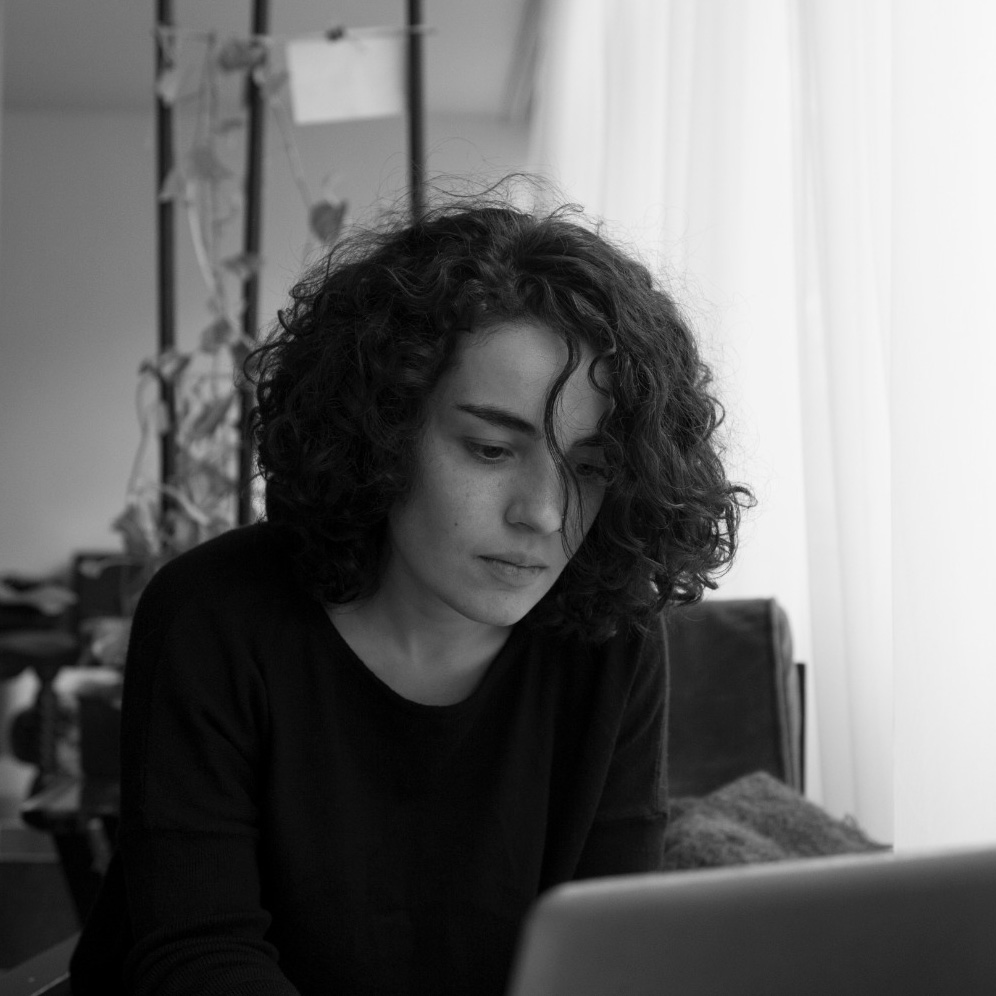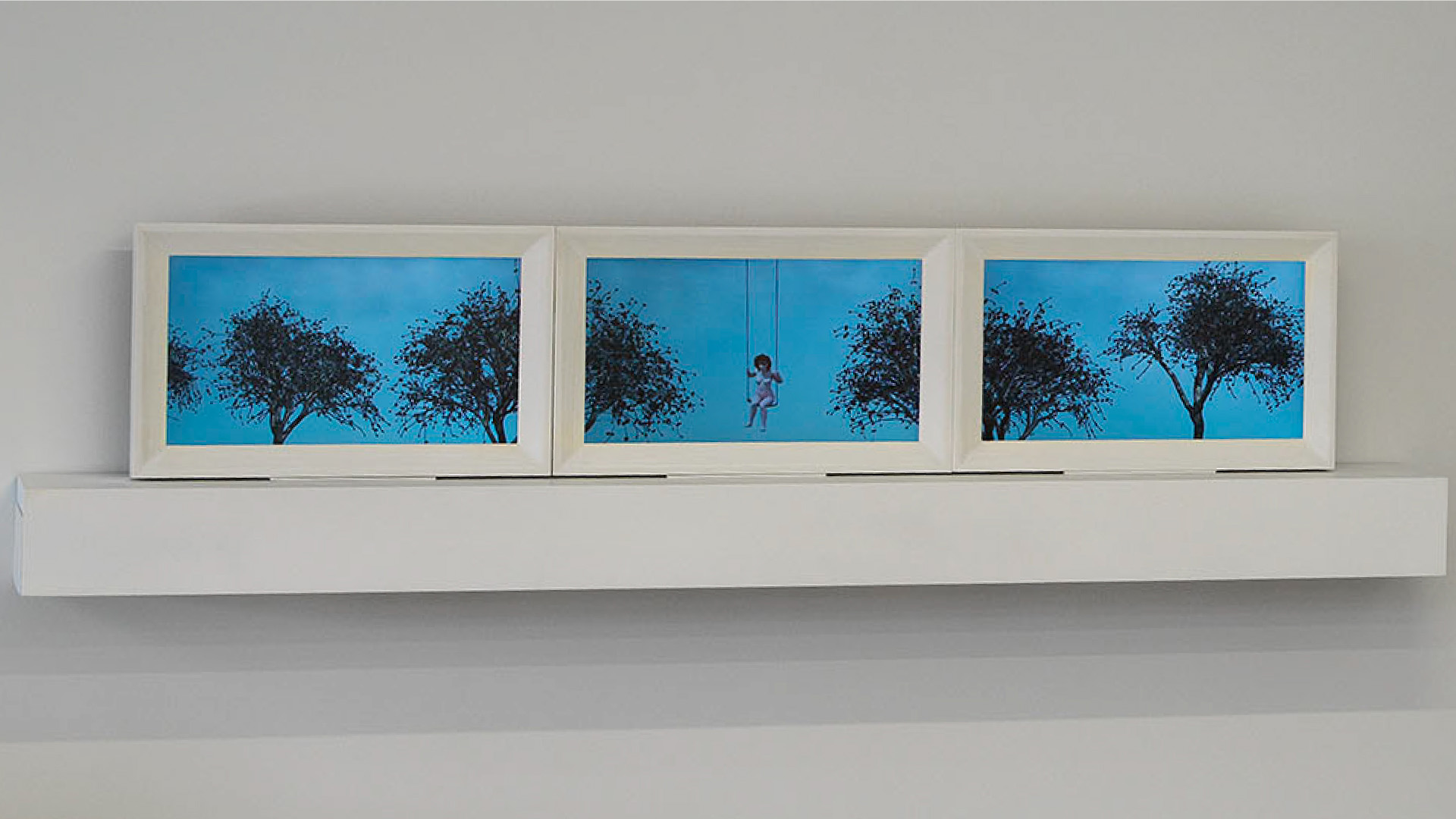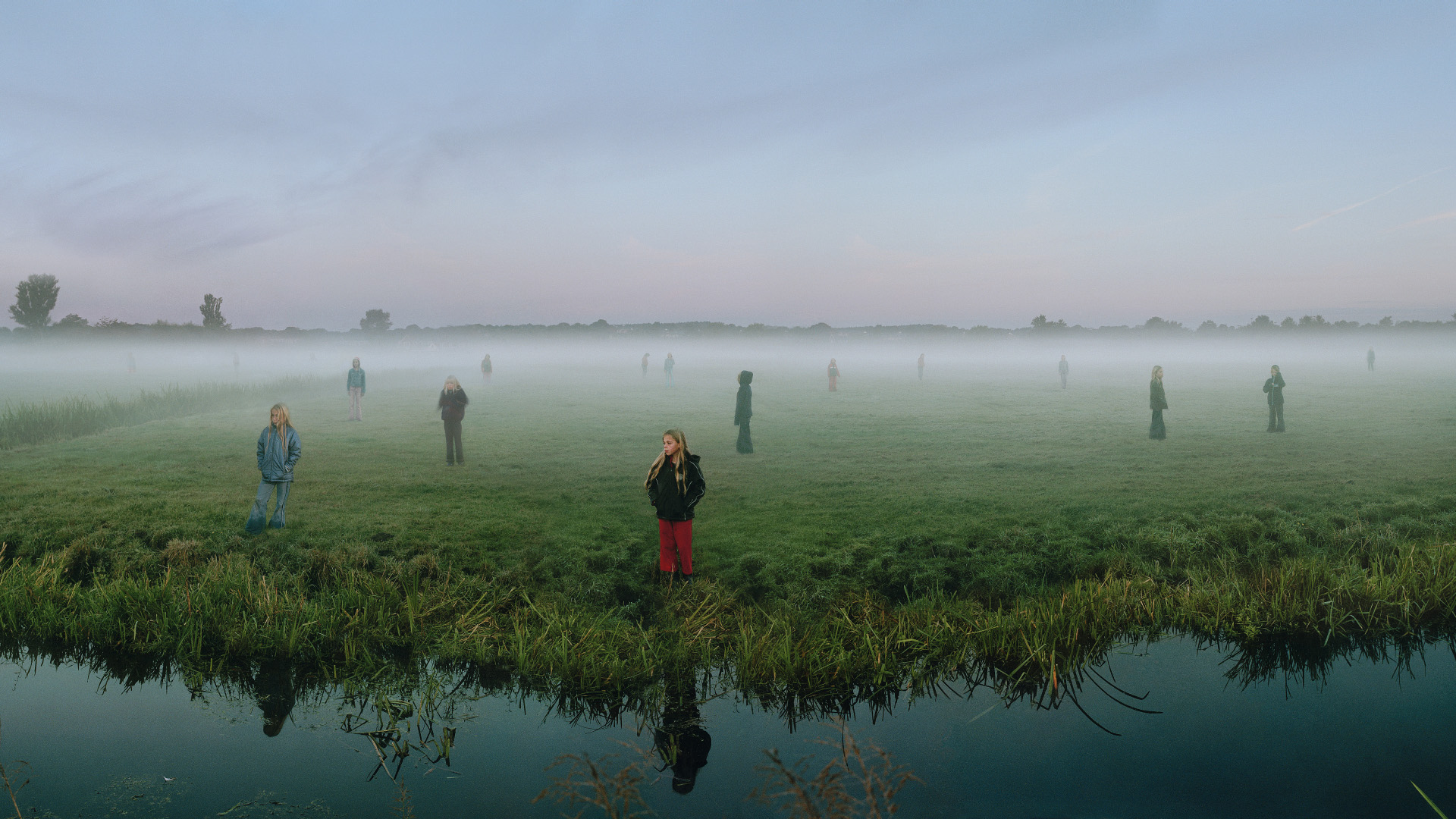Blog
An Interview With Olaf Otto Becker
29 May 2020 Fri
Olaf Otto Becker is a German photographer born in 1959, who works on long-term projects, blending his social and political stances with aesthetic decisions.
The aesthetic perception of the photographer, who received his training in visual communication and political science, seems to be highly influenced by the discipline of painting that he has maintained for many years earlier on in his life. As you can read in the conversation below, the artist says that he “cannot find the images on the canvas” and decides to concentrate on photography, a discipline in which he will interpret the existing.
Becker, who has been working in the field of landscape photography for more than 30 years, has been primarily focused on the subject of the impact of the human population on nature since 2001. These works, which generally start with large-format photographs without people, later confront humans and the traces left by humanity on the following pages. They are often based on long-term research and journeys that test physical strength.
During his visit to Greenland in 2001, after realizing the changes to a glacier he photographed a few years ago, the photographer focuses on global warming. Reading The Landscape, which was conducted between 2008 and 2014, shows the change in the untouched forests of Indonesia and Malaysia, has a strong impact that will potentially embarrass the audience.
There is a big difference between the impact of seeing the artist’s photographs as a single image and seeing them as series—perhaps as big as the mountains he photographs. Thus a long journey is waiting for you after reading this interview, as you browse through the artist’s website.
—İpek Çınar
İpek Çınar: Although landscape photography is the main topic of your photographic view for more than 30 years, your works also have a powerful connection with political and social issues. We know you studied communication design, philosophy and political science. And your works have not only aesthetic concerns but strong social beliefs. That's why I would like to start by asking your approach to landscape photography.
Olaf Otto Becker: I watch very carefully the international political and social events and I watch how we humans leave our mark on this planet through our tireless pursuit of economic growth. I notice that our actions are now leaving dramatic traces on the planet and that we will have to live with the dramatic consequences of our actions in the future. This worries me very much and moves me to make these human influences, which can be seen in the landscape, the subject of my visual work. As an observer, I want to visually record what worries me but also what makes me happy when I see it. I will not be able to stop the developments of the world with my images but I am certainly one of those who point in the direction where we do something wrong and where we should change something.
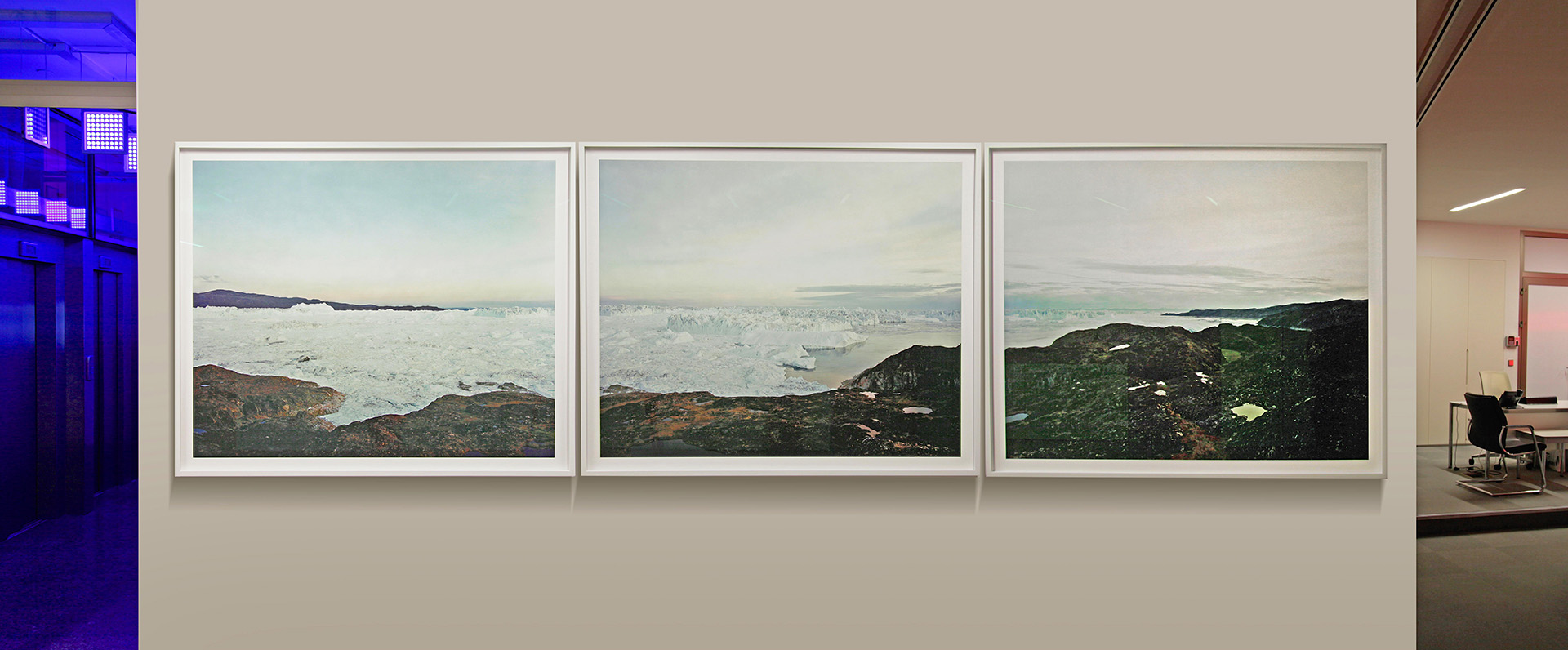
Olaf Otto Becker, Illulissat Icefjord 4, 07/2003, 69°12'74" N, 51°07'88" W, 2003.
153 x 552 cm, Pigmentprint on Aludibond.
İÇ: The subject of your photographs is not only nature. The signs of humanity are also a subject of your photographs. Do you intend to create awareness and how do you think your works communicate with the audience?
OOB: We humans are a part of the nature in which we live. The processes of nature have, among other things, also produced man. The philosopher Hans Jonas already said the following in his acceptance speech on October 11, 1987 at the awarding of the Peace Prize of the German Book Trade.
The ocean needs more protecting from us than we need protecting from the ocean. We’ve become far more dangerous to nature than it ever was to us. But what we threaten most of all is ourselves—and this through our most extraordinary achievements in controlling the material world. We are the danger that now surrounds us—and it is with this danger that we must henceforth struggle.
I deal with the traces we humans leave behind on this planet due to human overpopulation. The traces tell something about us and often show already now where the development will go in the future.
But how can images be used to create an awareness of these processes? I think it is first of all important that we get to know all of nature's creations by dealing with them. It is important to admire and appreciate these creations and that we understand that we all belong together on this unique planet. If we have understood this, then it will be easier for us to find a way to live better together on this planet in the future.
İÇ: When you work on a photography series, how do you approach the subject? Do you make a preliminary investigation or form particular images/ideas before shooting?
OOB: What is striking in the world right now? What is happening in the world right now? What is relevant not only for me, but for many people? These are the first questions I ask myself. As soon as I have found the overall theme, I start researching the details. Where do the traces of the theme best show up in the landscape? What is the best way to get there? Which contacts can I research in advance to get logistical support on site? How dangerous is the project for me? What are the costs? How do I finance the project? Then in the next step, I try to develop a visual strategy. What do the pictures have to show so that the topic is generally understood? But what is visually important is still best decided on the spot, which is why I spend weeks or months on the road to find my pictures in almost all projects.
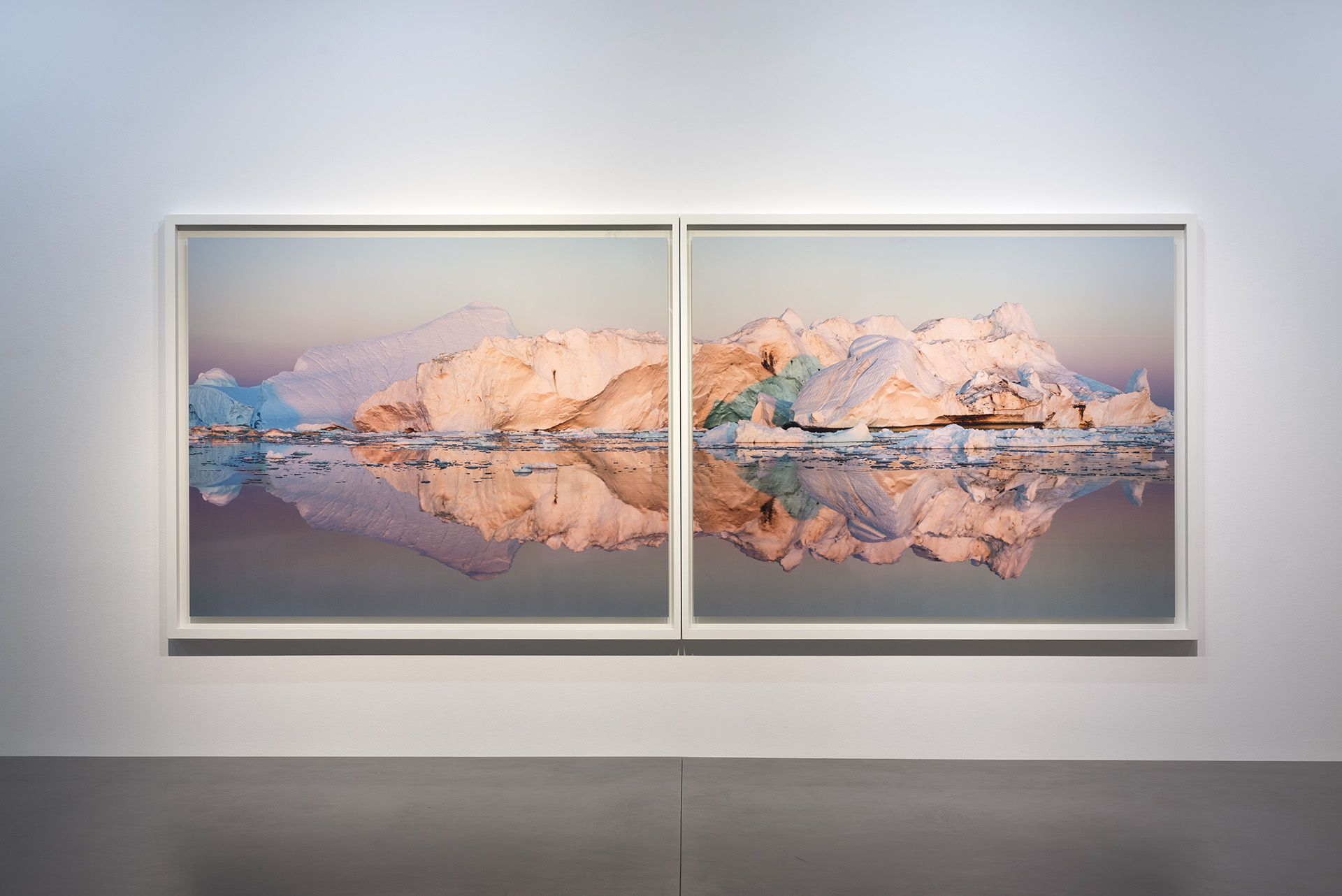
Olaf Otto Becker, Illulissat 13, 07/2015, 69 12' 12" N, 51 14' 30”, 2015.
182 x 446 cm, Lightjet print on Aludibond.
İÇ: Since 2003, you have been taking journeys to polar landscapes. For instance, in your project, Broken Line, you made a trip with your boat on the shores of Greenland and in another project, Above Zero, you travelled 450 km on foot in the melt zone of the Greenland Inland Ice. These quiet, lonely and long journeys require a special kind of emotional and physical strength. From all these journeys, what kind of experiences did you obtain?
OOB: The experiences I have had on all my travels have deeply influenced my view of life. The experiences have become a precious gift of life and have led to a wonderful personal view of this world, which I would like to share with my images. I feel great admiration for everything that nature has produced. Of course, I am also aware that change and destruction also belong to nature. My pictures of the glacial rivers on the inland ice show something beautiful. The pictures show beautiful blue rivers embedded in an ice landscape. These are strange and beautiful pictures at the same time, as only few people ever get to see them on site. At the same time, these pictures are a consequence of global warming. The ice in the Arctic is melting. It is melting because for the first time in the history of our planet we humans are responsible for the climate through our immeasurable consumption of resources. So every picture shows the change in beauty and at the same time reminds us to think about the consequences of the changes.
The physical challenges of my travels are also very important to me. I literally want to feel nature. When you fight with the forces of nature in a snowstorm in a small inflatable boat on the sea or on foot on the inland ice for several weeks, dragging 90 kilos of luggage behind you on a sled, you get a feeling for the dimensions of nature's forces and that creates humility before nature. One does not take oneself so important anymore and rather sees it as a gift that one is allowed to be here on earth.
İÇ: Since 2001, you have mainly focused on the analysis of environmental change. And although we know that you express yourself with photography for more than 30 years, we are not very familiar with your early works. Did your previous subjects are usually related to landscape photography and/or social issues?
OOB: Originally I wanted to become a painter. Before I came to photography, I painted for many years. I had my own studio and even then I had a penchant for large-format paintings. But I could not find my images on canvas. Again and again, I scraped off the colours because I could not find my images. At some point, I discovered the camera as a seemingly neutral tool to find my images. The landscapes in my hometown were my first motives. Later, first journeys followed and I began to discover traces in the landscape. And with this search for traces, my projects began.
İÇ: This question might be a little bit edgy. Although I had known your subjects and concerns in your works, when I saw your photographs for the first time, for an instant, I forgot everything because your photographs are extraordinarily beautiful in an aesthetic way. This makes me wonder: How do you balance between documenting social issues and your aesthetic concerns?
OOB: Landscapes that develop out of themselves and are untouched by humans fascinate me most. These untouched landscapes have something epic for me. With my images, I want to share my visual impressions with the viewer of my images. Only what we have got to know, we will appreciate and also protect. This is especially true for the primary primaeval forests in the world, which are particularly threatened by deforestation worldwide. I also show the destruction of landscape or destroyed landscapes. Destroyed landscapes, which present themselves like battlefields after a war, have a strange beauty in them. Destructive power also fascinates us.
It is important to me, however, that we think about what we see, or what I want to show or imply with my pictures. And I get the attention of the viewer most likely over the beautiful and sublime picture.
İÇ: Usually, landscape photographs are regarded as timeless. However, time is an important parameter in your works. One of the reasons for this is that many of your works are long term projects and you have photographed the same places several times in the process. In other words, we usually realize time concept by tracing changes in nature. So, I would like to ask both time and change as conceptions.
OOB: When I photograph a glacier again after 10 years and record the change, it also says something about the speed of a change process.
Time then suddenly plays a role, because we can only perceive time through change. At the same time, there are landscapes that show hardly any changes even after 10 years. With these pictures I understand that time is relative. Landscapes usually change only slowly, if we think of the growth of mountain massifs, for example. But if we don't think in time scales that can be experienced by humans, landscapes change very fast. The whole planet is in perpetual motion. Change is what determines everything.
ABOUT THE WRITER
İpek Çınar
Born in 1992 in Ankara, İpek Çınar has completed her studies in Political Sciences at METU in 2018 and began her graduate studies in the ‘Art in Context’ MA programme at UdK Berlin in 2020.
Working predominantly with the photographic medium since 2011, Çınar tells stories that seek to convey an idiosyncratic language by blending photography with writing. In addition to her photographic production, she contributes to various publications with essays, interviews and series of articles; prepares exhibition catalogues and acts as a content advisor, particularly on photography.
Çınar was among the coordinators of The Booklab project by Frederic Lezmi and Okay Karadayılar; she worked as an instructor for the Darkroom and editing workshops at Ka Fotoğraf Geliştirme Atölyesi (Photography Enhancement Atelier) in Ankara and acted as a content advisor for the photography documentary of TRT 2, İzler Suretler (Faces Traces).
She opened solo exhibitions at Poligon “The Shooting Gallery” and at Ka Fotoğraf Geliştirme Atölyesi and took part in numerous group shows in Turkey and abroad. She has been invited to international artist residencies, workshops and festivals where she participated in exhibition and lecture programs. İpek Çınar, who is also a member of AICA Turkey, is the co-editor of Orta Format Magazine since 2015 and she loves the magazine very much.
